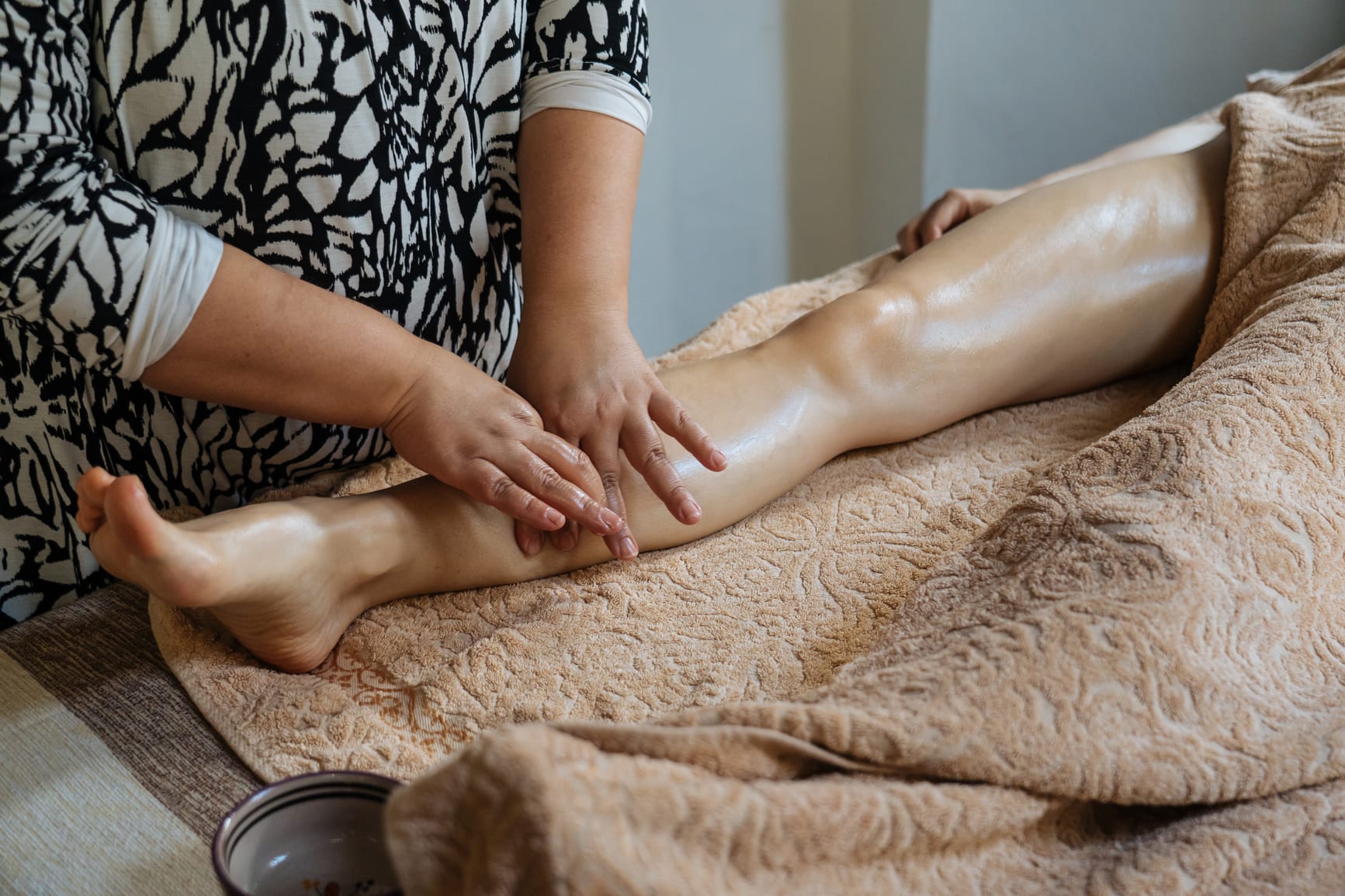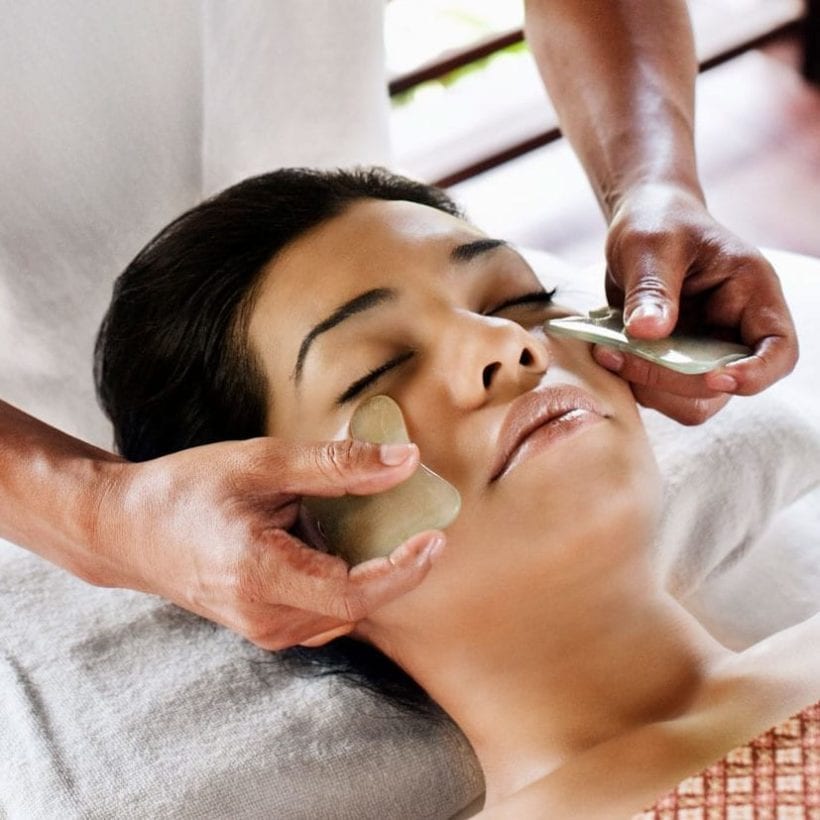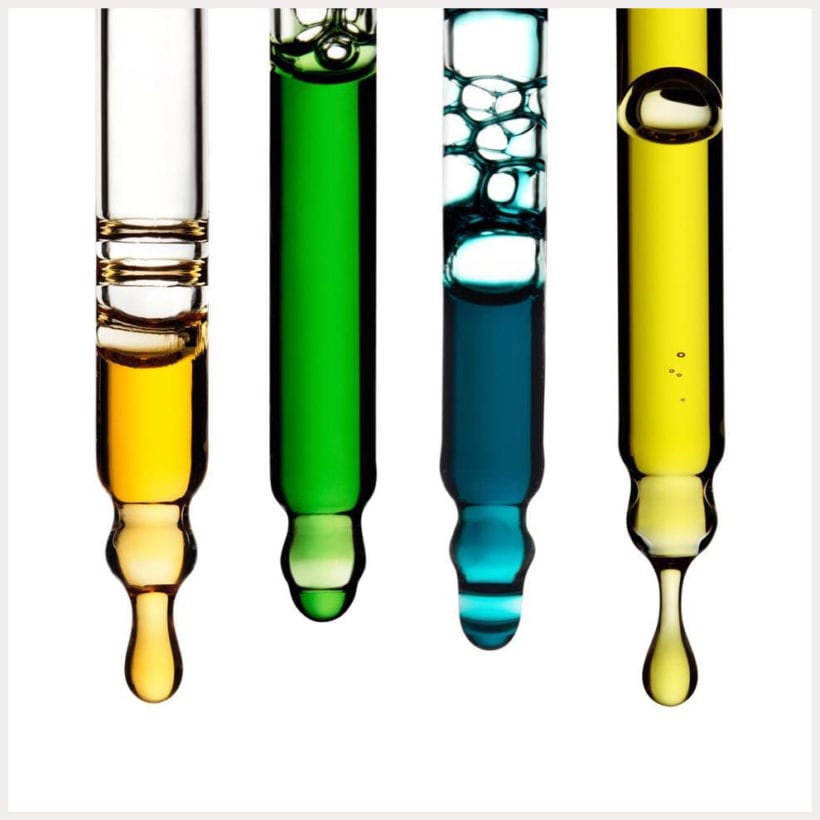The stay-at-home orders going into effect last spring triggered a wave of at-home DIY beauty and wellness treatments — we learned how to color our hair, create works of nail art, and master the DIY facial. But the most beneficial beauty and wellness treatment to make its way into our at-home routines may be the rise in popularity of lymphatic massage.
Lymphatic massage is a technique that boosts the movement of lymphatic fluid (which helps remove toxins and waste) through your body. For most people, staying active is enough to keep this fluid moving naturally (though a condition called lymphedema can cause lymph fluid to build up, which can be serious and should be treated by a doctor) but lymphatic massage can be a welcome boost. “I always like to call it the cherry on top of the ice cream, because when you are living a healthy lifestyle — you’re exercising, you’re eating relatively clean — you might still feel puffy or wake up feeling bloated,” says Giordana Vogel, founder and creative director of De la Heart, and the woman behind Instagram’s favorite lymphatic drainage paddle. “Lymphatic drainage gives your system a boost.”
In addition to promoting the flow of lymph fluid and helping to ease puffiness, proponents believe lymphatic massage “improves the immune system due to the important elimination of toxins,” says Flavia Lanini, a lymphatic massage expert based in California.
It’s also heralded for its sculpting properties. “Combined with other treatments, it also helps in the reduction of edematous cellulite and brings body and mental relaxation, promoting an immediate sense of wellbeing,” Lanini says. Vogel personally swears by the ability of lymphatic massage to reduce cellulite. “It changed my legs — it’s something that I was self-conscious about and doing this I started seeing improvement. That’s when I was like, every woman needs to have this.”
Lymphatic massage has been regularly practiced for decades, but the pandemic has made it more accessible than ever. “Before COVID, it was a treatment that was kind of exclusive because it is very expensive,” says Vogel, adding that sessions in cities like Miami and LA typically run around $300. Given Lanini recommends a lymphatic treatment once a week, that gets pricy.
Luckily, you can DIY a lymphatic massage. “Twenty minutes per day will make a huge difference,” says Lanini, but even five or 10 minutes will have a noticeable impact.
How to give yourself a lymphatic massage
First things first, you’ll need the right tool. There are lots of specially designed options on the market which are contoured for easy gliding that will help you apply the right amount of pressure to the skin. (A good rule of thumb: if you can feel it in the muscles underneath your skin, you’re pressing too hard.)
The de la heart paddle is based on a homemade version Vogel’s mother used when she was growing up. “I added different sides to contour different parts of the body and made it smaller so you can travel,” she says. “It’s the perfect tool for people to be able to keep up with their self-care routine from home.”
Secondly, you’ll want to oil up. Put body oil like jojoba or coconut oil (you can also use a firming cream) all over your body. “Make sure you’re really hydrated — you have to be oiled up so the tool glides properly and you’re not bruising,” Vogel says. Hold the tool at a 45-degree angle to your skin — this will create a sort of “scooping” motion, Vogel explains — and apply light pressure.
Start from the bottom (your ankles) and move up. “You’re always moving with strokes that move towards the heart or towards the closest set of bigger lymph nodes,” which are in your groin, your armpits, and behind your knees, Vogel explains. “You want to kind of drag everything towards there.” The idea is to move stagnant fluid from the tissues in your body back towards the major lymph node centers where it can be processed and toxins eliminated.
Once you’ve finished your bottom half, tackle the arms. “Start from your wrist, and then move all the way to the underarm,” Vogel says.
For a full-body treatment, Vogel recommends repeating the following strokes 3-7 times each:
- Ankle to the inner thigh (If you’re using a tool, it should be in the horizontal)
- Ankle to the outer thigh (If you’re using a tool, it should be in the vertical)
- Back of the knee to butt (If you’re using a tool, it should be in the vertical)
- Hips to armpits (If you’re using a tool, it should be in the vertical)
- Wrist to armpit on the inner side (If you’re using a tool, it should be in the vertical)
- Wrist to armpit on the outer side (If you’re using a tool, it should be in the vertical)
You can give yourself a lymphatic massage using a dry brush (or a loofah, or even just your hands) but using a contoured tool will help you stimulate the deepest layers of your dermis. “A dry brush focuses more on topical detoxification. You’re removing dead skin cells and you’re activating the circulatory system,” Vogel says. “Since it’s so connected to the lymphatic system, that gets activated too. A tool allows you to really go a little bit deeper — not so deep that you hit the muscle but in between, which is where that water retention lays.”
Finally, be consistent for the best results. “If you’re active and eating healthy and you’re adding this to your self-care routine, you will start seeing changes in your body within a week,” Vogel says. “The more you do it, your body starts creating this rhythm, this cadence, where you’re no longer retaining so much and the massage gets shorter. You start seeing more and more benefits.
We only recommend products we have independently researched, tested, and loved. If you purchase a product found through our links, Sunday Edit may earn an affiliate commission.







